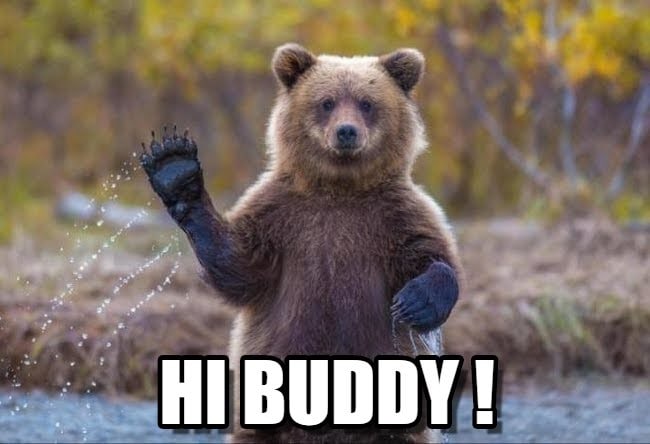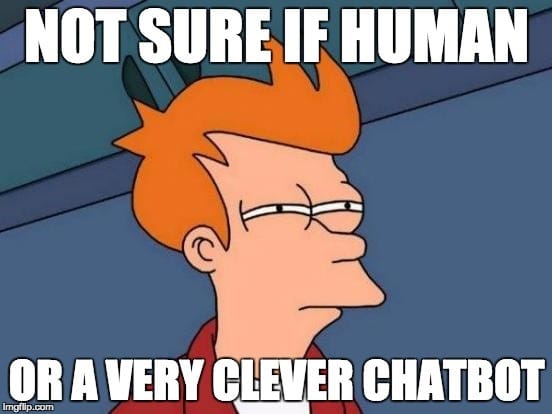What is a chatbot? They come in two flavors:
- Virtual assistants, which help you find information, remember stuff, or buy things. Think Apple’s Siri, Amazon’s Alexa, Microsoft’s Cortana, and Google’s Assistant. These are powered by machine learning, meaning they rely on artificial intelligence to learn and figure out what you want.
- Messaging apps, which essentially allow businesses and brands to be online 24/7 providing customer support (e.g., instant responses, quick answers, complaint resolution). Think Facebook Messenger, Kik, WeChat, and Slack. These types of chatbots are only capable of interacting with users by following pre-programmed rules.
What you see and experienced so far is just the beginning of what is forecast to be a billion-dollar industry in less than 10 years. Many top brands, including Uber, Sephora, and CNN, have already adopted chatbots.

Still wondering what is a chatbot? Here are 11 amazing facts that might help explain what really it is and how it’s changing the world of digital technology.
Fact 1: 1.4 Billion People Use Messaging Apps
The top four messaging apps are bigger than the top four social networks, according to BI Intelligence. More than 1.4 billion people used messaging apps in 2016, according to eMarketer. By 2019, more than 25 percent of the world’s population (roughly 1.75 billion people) will be using mobile messaging apps.
Fact 2: People Are Ready to Talk to Chatbots
According to a report (Humanity in the Machine) from media and marketing services company Mindshare, 63 percent of people would consider messaging an online chatbot to communicate with a business or brand. A survey conducted by myclever Agency found that they would use chatbots to obtain “quick emergency answers.”
Fact 3: People Want to Contact Retailers via Chat
Online chat and messaging apps are the preferred way for 29 percent of people to contact retailers when making a purchase decision, according to [24]7. That means people are equally likely to contact a retailer by phone or use a chatbot and more likely to use a chatbot than to contact a retailer via email (27 percent).
Fact 4: There Are More than 30,000 Facebook Chatbots
As of September, there were 30,000 chatbots on Facebook. Those chatbots have been used by millions of people in 200 countries.
Fact 5: Most Chatbot Conversations Start With “Hi”

“Hi” and “hello” are the two most popular ways to start a conversation with a chatbot, according to Dashbot.io, a bot analytics provider. Other popular messages included a question mark, “hey,” “help,” “yes,” and a thumbs up icon.
Fact 6: Consumers Are Ready to Buy Things via Chatbots
Thirty-seven percent of Americans say they are willing to make a purchase through a chatbot, according to DigitasLBi. On average, consumers would spend more than $55 per purchase. If a chatbot were available, 33 percent of UK residents would buy basic items like clothes and food, according to myclever Agency
Fact 7: Consumers Won’t Put Up With Bad Chatbots
One bad chatbot experience could be costly. According to the DigitasLBi report, 73 percent of Americans said they wouldn’t use a company’s chatbot after a bad experience. According to Mindshare’s report, 61 percent of people would find it more frustrating if a chatbot couldn’t solve a problem vs. a human.
Fact 8: Consumers Want Recommendations From Chatbots
Thirty-seven percent of all consumers–and 48 percent of millennials — are open to receiving recommendations or advice from chatbots, according to DigitasLBi. Breaking this down further, consumers are interested in recommendations for products from retail stores (22 percent); hotels/accommodations (20 percent); travel (18 percent); products from a pharmacy (12 percent); and fashion/style (9 percent).
Fact 9: Don’t Blur Lines Between Bots, Humans
An overwhelming majority of consumers (75 percent) said they want to know whether they are chatting with a chatbot or a human (48 percent considered chatbots pretending to be human “creepy”), according to Mindshare. The robotic and artificial nature of responses clued in 60 percent consumers that they were interacting with a chatbot, according to DigitasLBi.
Fact 10: Chatbots Will Be Indistinguishable From Humans by 2029
Ray Kurzweil, an inventor, futurist, and engineer at Google (who has a pretty good knack for making accurate predictions) predicts that chatbots will have human-level language ability by the year 2029. “If you think you can have a meaningful conversation with a human, you’ll be able to have a meaningful conversation with an AI in 2029. But you’ll be able to have interesting conversations before that,” according to Kurzweil, as quoted in The Verge.
Fact 11: People in China Seriously Love Chatbots
Xiaoice is a ridiculously popular chatbot in China, according to Engadget. The average conversation length is 23 conversations per session (CPS). The average CPS for pretty much every other chatbot: 1.5 to 2.5.
Bonus fact: Pretty soon chatbots will be ridiculously popular in the U.S. as well. Are you ready for the amazing chatbot revolution?

Originally posted in: Inc.com
FAQs about Chatbots
What is a chatbot?
A chatbot is a computer program or artificial intelligence that is designed to simulate human conversation through text or voice interactions. It is used to automate tasks, provide information, and engage in real-time conversations with users.
How do chatbots work?
Chatbots work by utilizing natural language processing (NLP) algorithms to understand and interpret user inputs. They analyze the input, identify the intent behind it, and generate appropriate responses using pre-defined rules or machine learning models.
What are the types of chatbots?
There are several types of chatbots, including rule-based chatbots, AI chatbots, virtual assistants, and voice assistants. Rule-based chatbots follow a set of predefined rules, while AI chatbots use machine learning algorithms to improve their responses over time.
Where are chatbots used?
Chatbots are used in various industries and sectors, including customer support, e-commerce, healthcare, finance, and entertainment. They can be deployed on websites, messaging platforms, mobile apps, and voice-based devices.

We just tried out first chatbot and a cold-lead filled the entire chat-bot form and booked an appointment on the first day! We were blown away by the positive response!